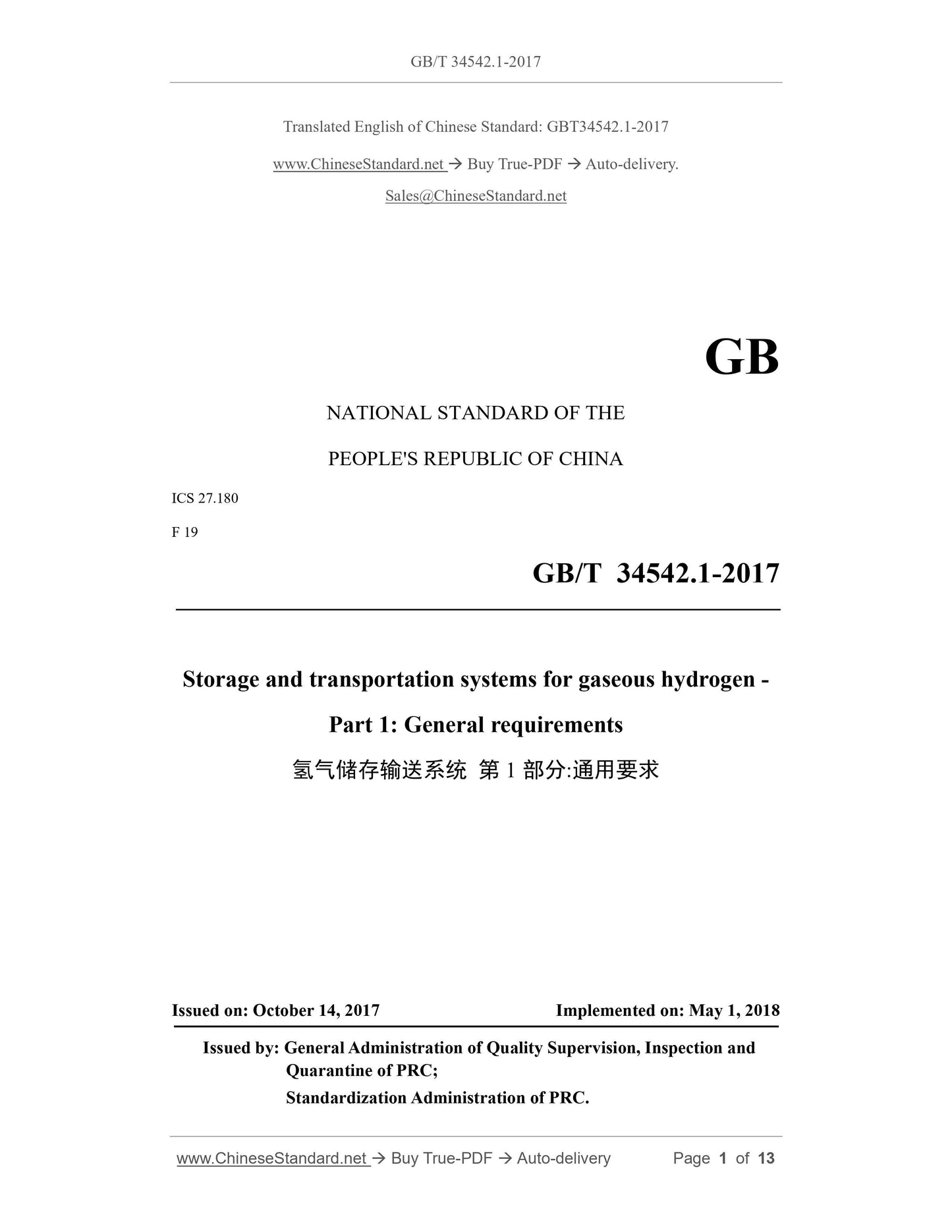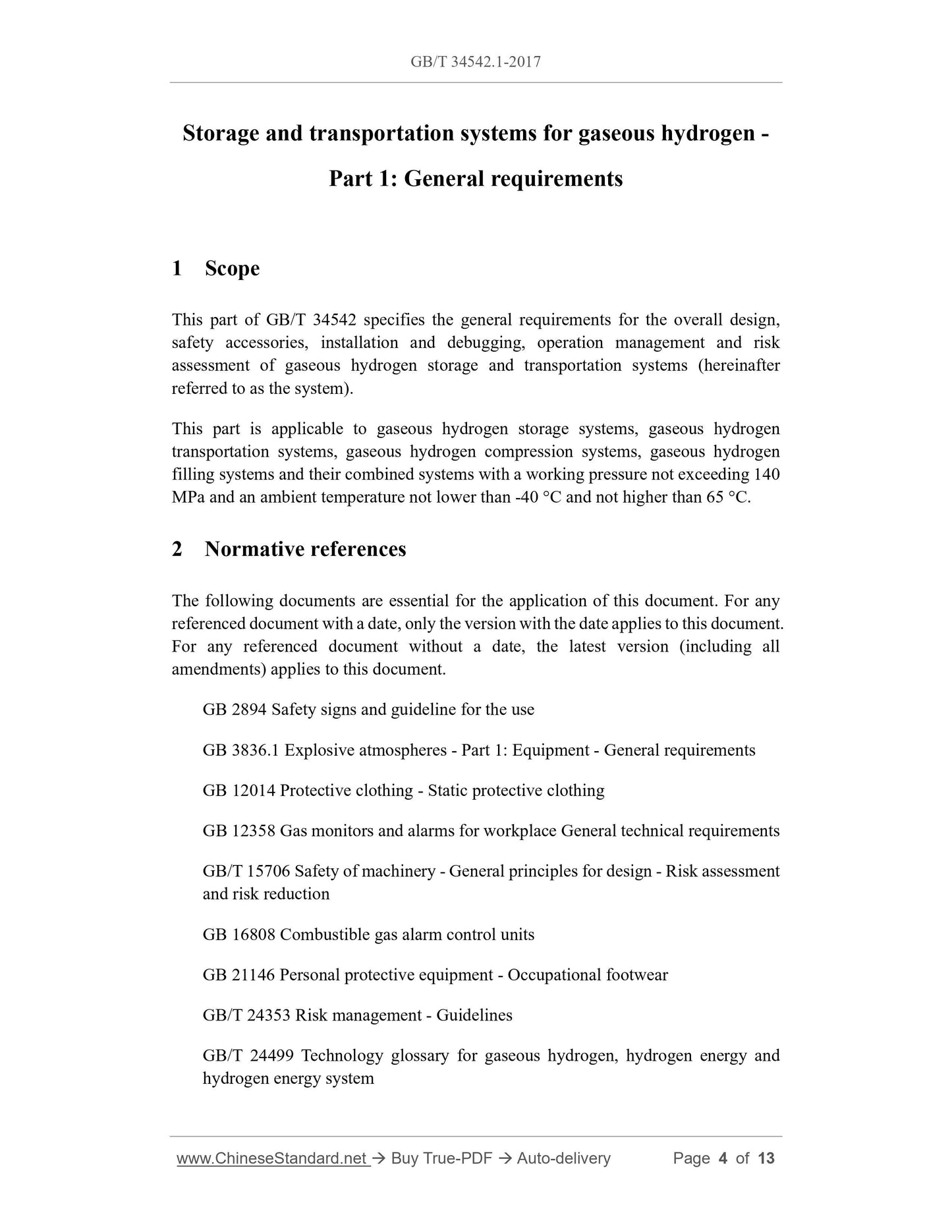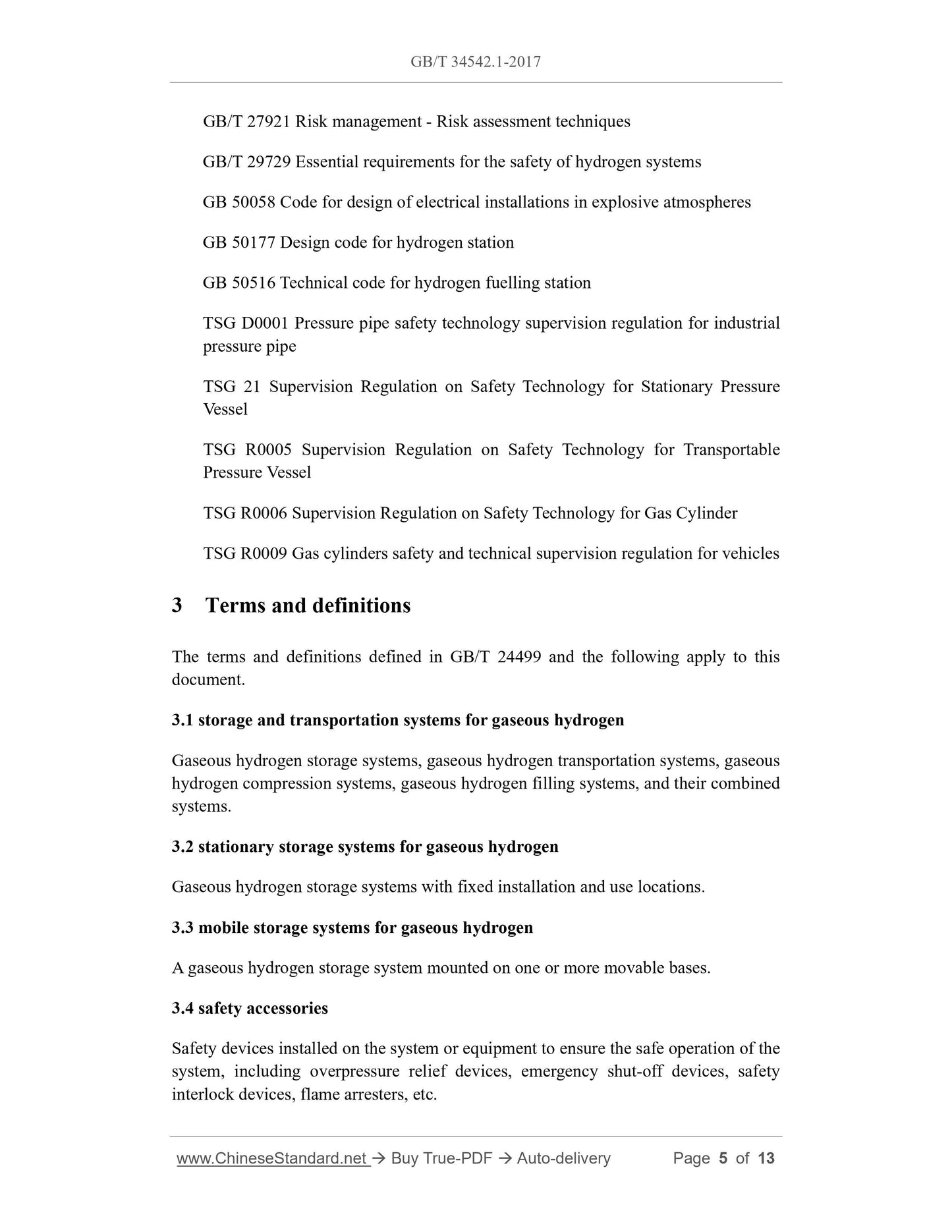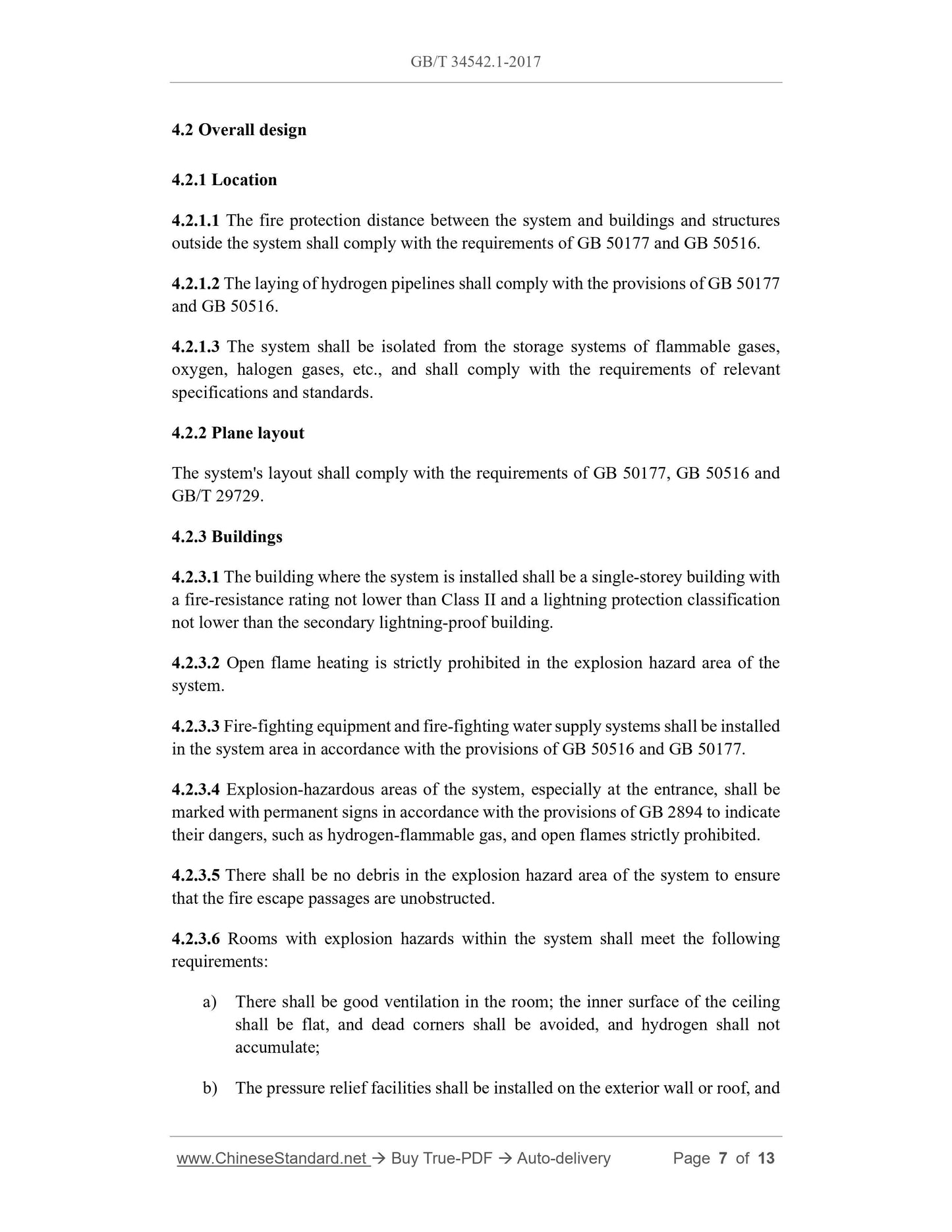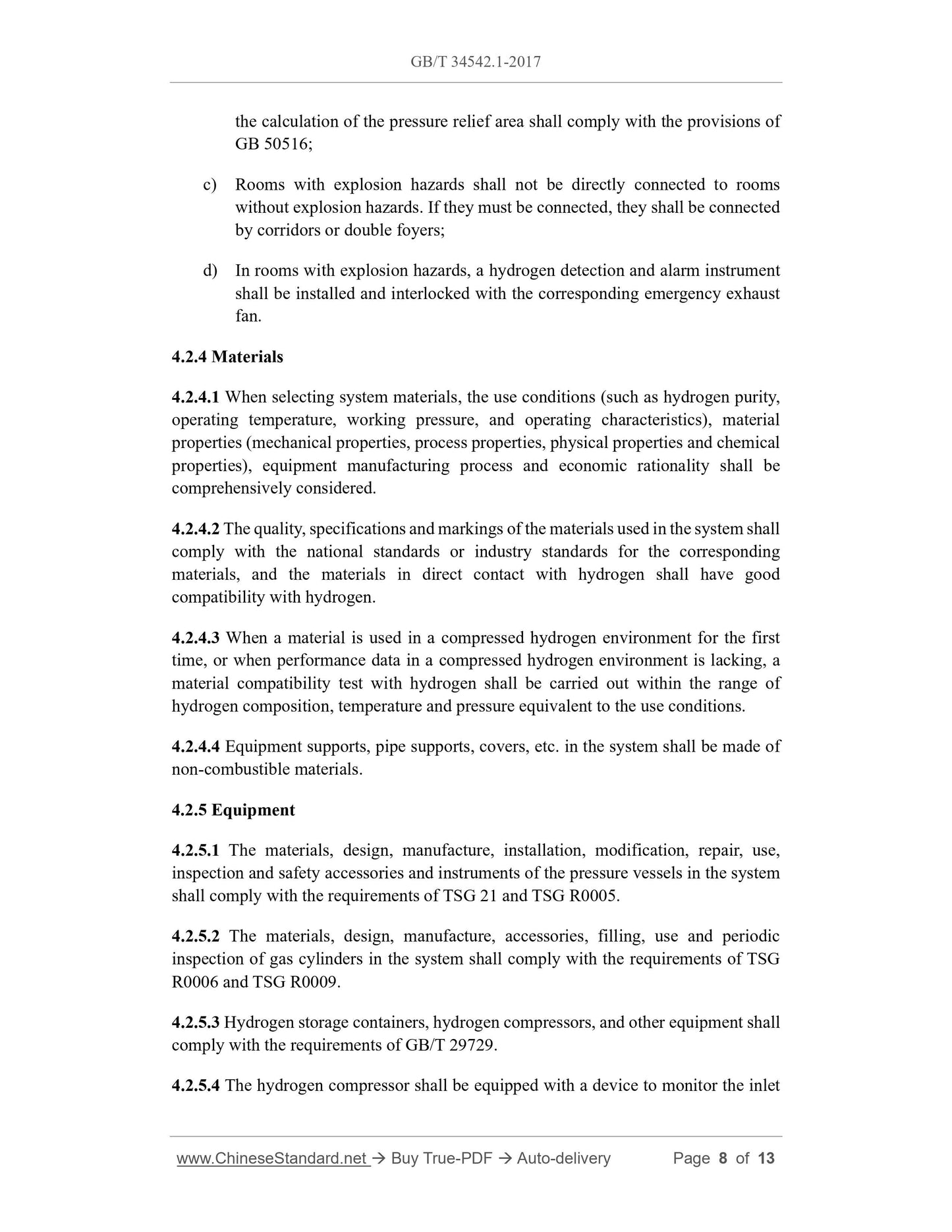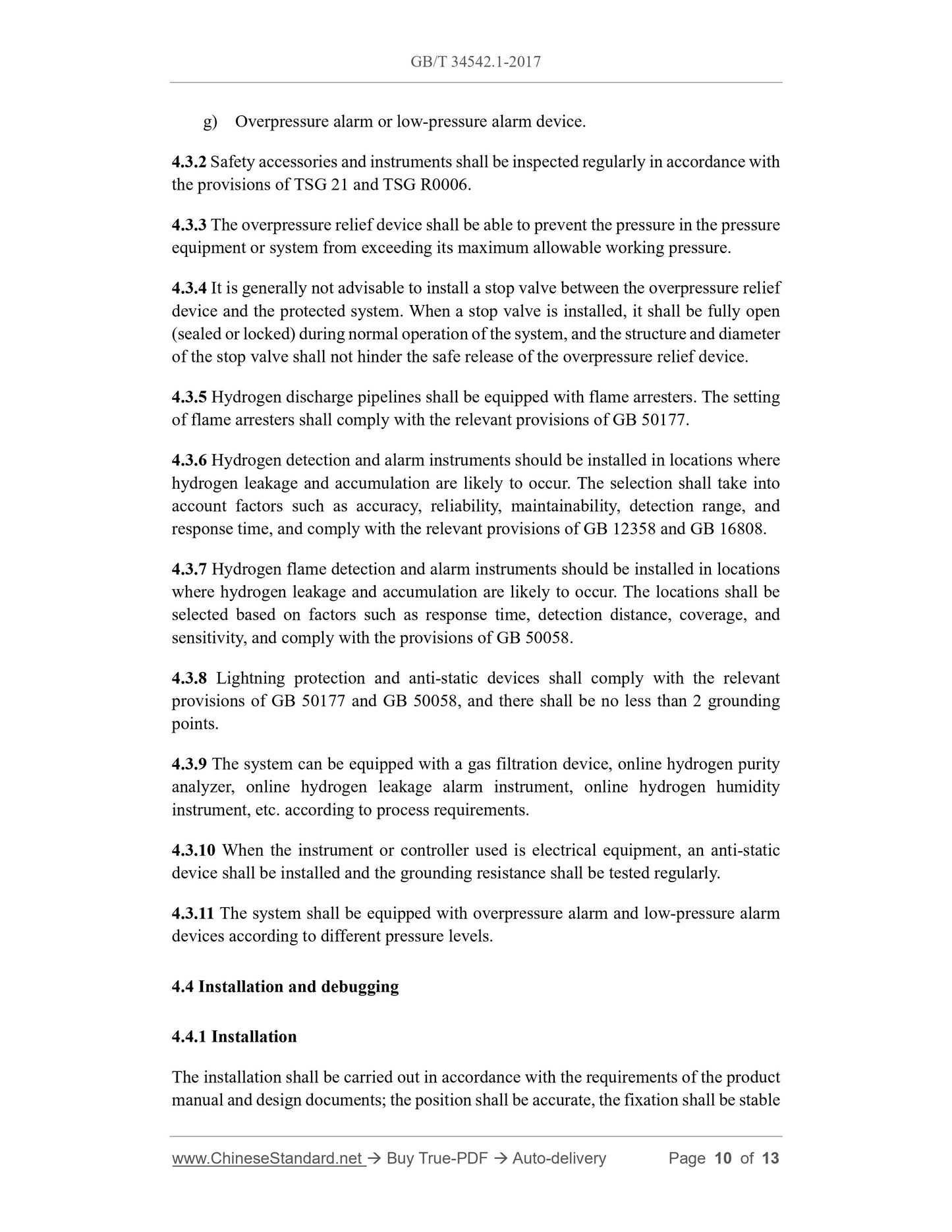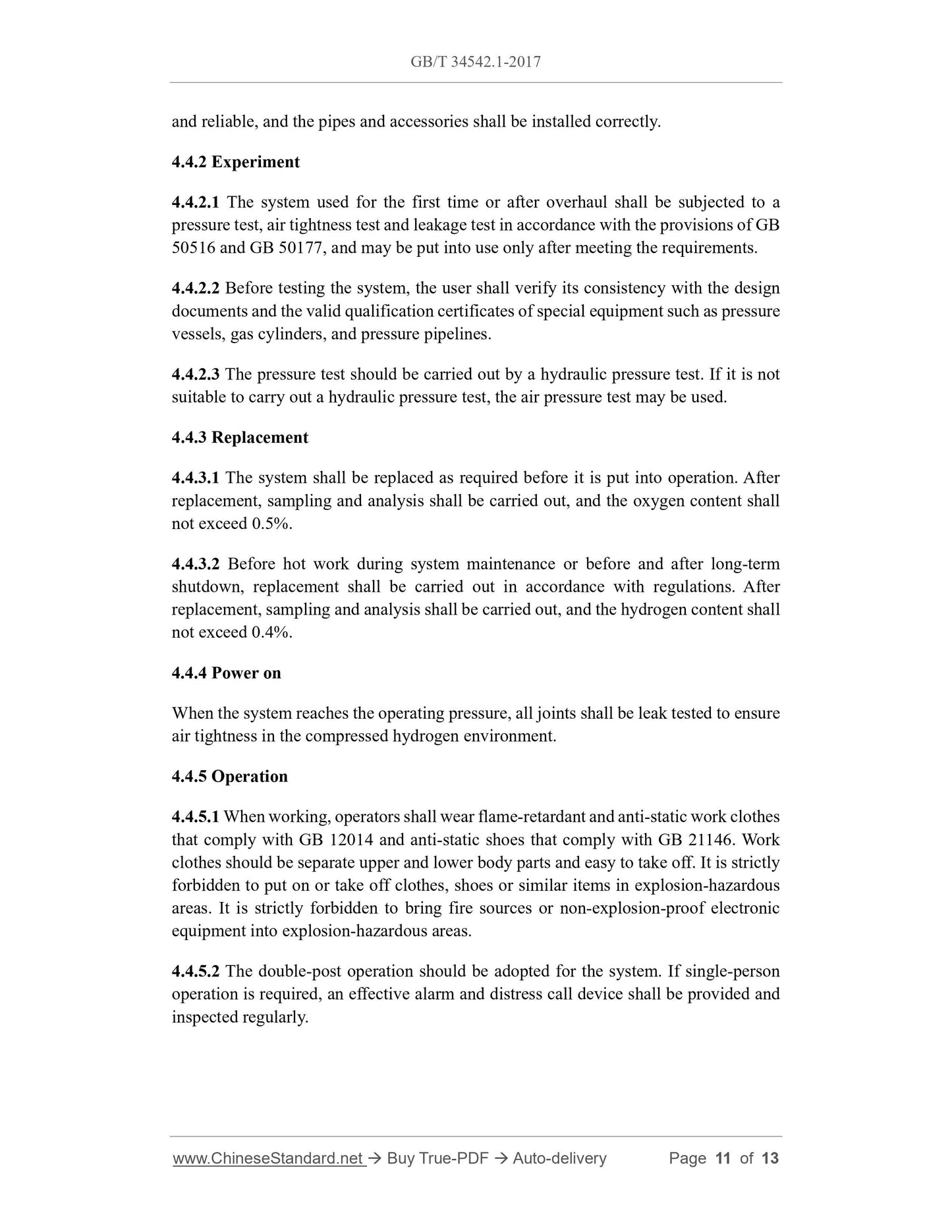1
/
of
9
www.ChineseStandard.us -- Field Test Asia Pte. Ltd.
GB/T 34542.1-2017 English PDF (GB/T34542.1-2017)
GB/T 34542.1-2017 English PDF (GB/T34542.1-2017)
Regular price
$165.00
Regular price
Sale price
$165.00
Unit price
/
per
Shipping calculated at checkout.
Couldn't load pickup availability
GB/T 34542.1-2017: Storage and transportation systems for gaseous hydrogen - Part 1: General requirements
Delivery: 9 seconds. Download (and Email) true-PDF + Invoice.Get Quotation: Click GB/T 34542.1-2017 (Self-service in 1-minute)
Newer / historical versions: GB/T 34542.1-2017
Preview True-PDF
Scope
This part of GB/T 34542 specifies the general requirements for the overall design,safety accessories, installation and debugging, operation management and risk
assessment of gaseous hydrogen storage and transportation systems (hereinafter
referred to as the system).
This part is applicable to gaseous hydrogen storage systems, gaseous hydrogen
transportation systems, gaseous hydrogen compression systems, gaseous hydrogen
filling systems and their combined systems with a working pressure not exceeding 140
MPa and an ambient temperature not lower than -40 °C and not higher than 65 °C.
Basic Data
| Standard ID | GB/T 34542.1-2017 (GB/T34542.1-2017) |
| Description (Translated English) | Storage and transportation systems for gaseous hydrogen - Part 1: General requirements |
| Sector / Industry | National Standard (Recommended) |
| Classification of Chinese Standard | F19 |
| Classification of International Standard | 27.180 |
| Word Count Estimation | 10,152 |
| Date of Issue | 2017-10-14 |
| Date of Implementation | 2018-05-01 |
| Issuing agency(ies) | General Administration of Quality Supervision, Inspection and Quarantine of the People's Republic of China, Standardization Administration of the People's Republic of China |
Share
